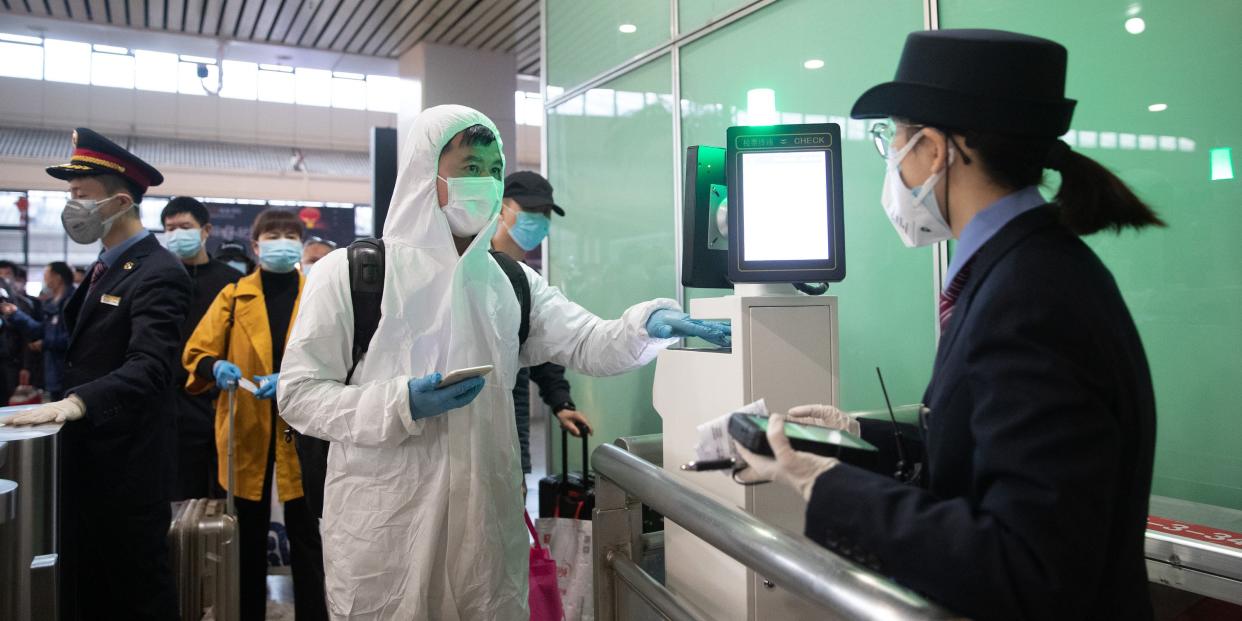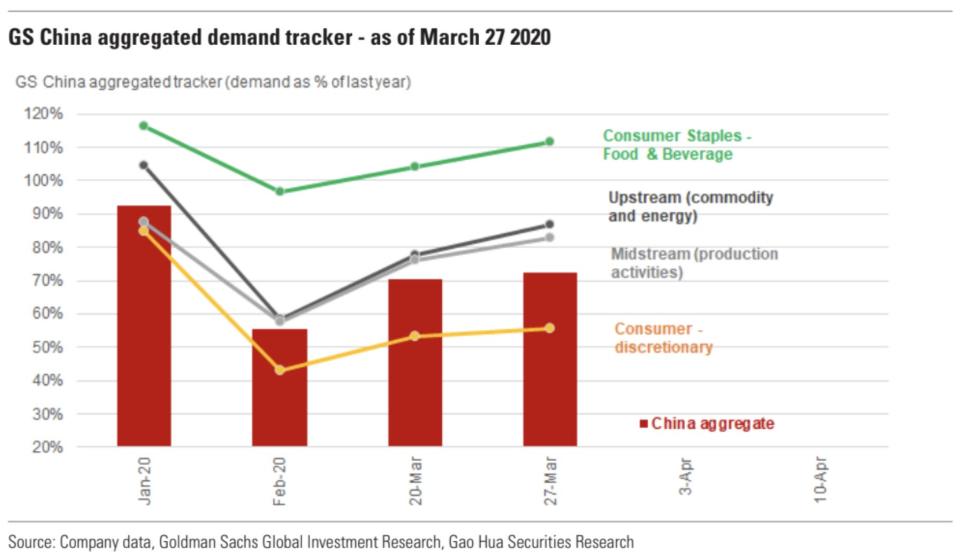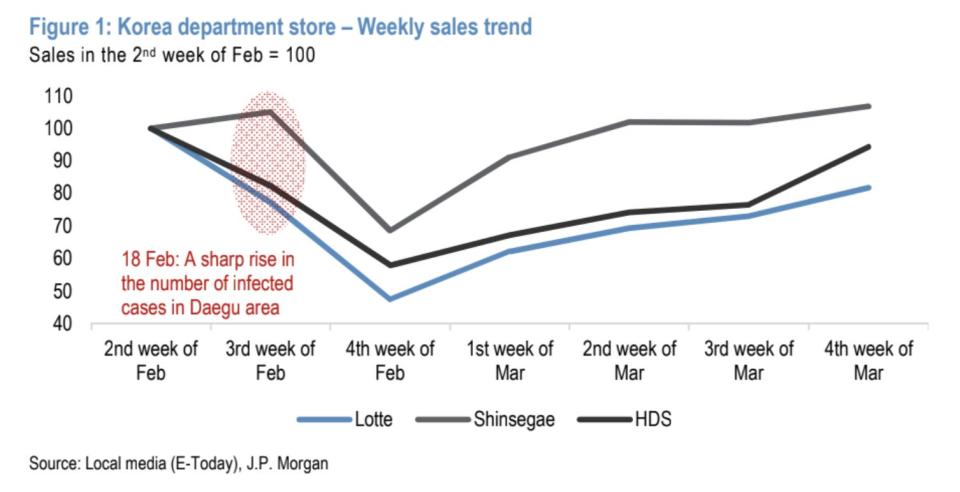INSIDER TODAY: Ready to download a coronavirus tracking app that maps where you go and who you see?

Costfoto/Barcroft Media via Getty Images
Hello, everyone! Welcome to the next edition of Insider Today. If you haven't signed up yet, please do so here.
As a reminder, this is a beta email publication that I'm writing with the help of many of our excellent journalists. Our goal is to provide you with information and insight about the big stories of the day.
Thanks for reading. Please feel free to reply to this email and tell us what you like or don't like, and we'll evolve and improve as we go.
All the best to you and your colleagues, friends, and families during a challenging and unsettling time.
—Henry Blodget, editorial director and CEO (henry@insider.com)
SUMMARY: When the US and Europe reopen, we will need excellent "testing and tracing" capabilities. The latter will likely require tracking technology that will freak out privacy advocates. Ready? | The evidence on whether President Trump's favorite coronavirus drug works really is mixed. | Ugh on another horrific week of job losses. | When will the economy recover, and what will the recovery look like? My guess: The Nike swoosh symbol.
Some good news this week. The "first wave" of the coronavirus pandemic appears to be peaking. Social distancing appears to be working.
Now, those of us who are lucky enough to be healthy or to have recovered from COVID-19 are wondering, what's next? When will it be safe to resume normal life? What will "normal life" even look like? And the fight about when and how to reopen the US and Europe has already begun.
Ready to download your government tracking app?
Most experts agree that a vaccine for the coronavirus will take at least 12 to 18 months to develop, test, and manufacture in sufficient quantities. In the meantime, we'll be dependent on some form of continued social distancing, drugs that help treat the virus, and a strong and competent "testing, tracing, and isolation" capability.
We'll dive into each of these topics in the coming days. (And if you missed our analysis of President Trump's favorite coronavirus drug, hydroxychloroquine, please read it here.)
But for now, a question for you on the testing-and-tracing component, which is proving to be vitally important in countries like South Korea, China, and Taiwan, which have already gotten a handle on the virus.
Assuming the US and Europe can get their testing capabilities where they need to be — namely, higher capacities (enough to randomly test lots of people with no symptoms), faster turnarounds (hours and days, not a week or more), and cost (free) — how do you feel about the government using technology to track your locations and interactions?
Specifically:
Would you download and use a government app that tracks everywhere you go and who you interact with?
As a story from Business Insider's Tim Levin on the reopening of Wuhan, China, reminds us, this is how China and other countries are doing it. And a tracking app would be particularly important in US since we do not have a central epidemic-tracing organization with tens of thousands of employees who could do this manually.
As Insider's Dave Mosher explains, this app could track you anonymously — the government would not necessarily need to know who you are, just where you've been and whose paths you might have crossed. The government would also need a way to contact you — by text message, perhaps — to tell that you you've been close to someone who has tested positive and therefore should quarantine and maybe get tested yourself. The government would also need to be able to require anyone who tested positive for the coronavirus to reveal that, so their movements and interactions during the previous week could be analyzed and mapped.
But this would still require you to download and use a government app that tracked your movement and behavior to a level that many privacy advocates would likely have misgivings about.
So how would you feel about that?
If you and tens of millions of other Americans and Europeans would reject the idea out of hand, it's going to be tough for us to build a competent nationwide "tracing" capability. We just don't have the infrastructure or team to do it any other way.
An update on Trump's favorite coronavirus drug, hydroxychloroquine
As we explained in detail, the evidence that hydroxychloroquine is an effective treatment for COVID-19 is mixed. Early studies that seemed promising had significant flaws; other early studies concluded the drug had no benefit. And some studies have been discontinued because of worrisome side effects.
The scientist Derek Low analyzed a recent study from France on his blog, In the Pipeline. While cautioning that it was a very small study of patients with challenging circumstances, Low said that the study "provides no evidence to show that the HCQ/AZ combination had any benefit at all." He cited another study showing that these drugs did cause alarming heart problems, one of the known side effects.
Low also said that, after sharing his views, he's heard complaints that he's not saying things that "bring people hope." To this he responds that bringing hope is not his job. His job is analyzing data and statistics. And, unfortunately, he said, when one does rigorous statistical analysis — instead of glomming on to hopeful anecdotes — "most things" don't work.
That's not to say that doctors are wrong to continue to prescribe hydroxychloroquine as a treatment for the coronavirus, or that patients are wrong to try it. It's just a reminder that the evidence of its effectiveness really is mixed and it may not work at all.
Ugh on the job losses
The economic effect of the coronavirus in the US has been disastrous. As Markets Insider's Carmen Reinicke reported on Thursday, another 6.6 million jobless claims were filed in the past week, and the US has now reached a total of more than 16 million job losses in the past three weeks. That's 10% of the US workforce. One in 10 working Americans has been laid off.
In some states, the first enhanced unemployment-benefits checks are going out. They won't replace all the lost income. And they won't last forever. But they'll help.
This third week of horrific job losses is also accelerating talk in Washington about a fourth emergency-rescue package, following the $2.2 trillion one the government passed two weeks ago. Excitement about that new stimulus, as well as the "peaking" of new coronavirus cases, has helped drive the stock market up more than 30% from its recent low.
The job losses and activity restrictions have had a devastating effect on consumer spending in the US. This chart from Bank of America's research team shows daily credit-card spending versus last year for most of March. Yellow, orange, and red are declines. Green is growth.

Bank of America
As the chart shows, spending on travel, hospitality, live entertainment, and other sectors dropped almost to zero (and sometimes beyond zero, thanks to refunds).
The only areas where spending grew were ecommerce — up an encouraging ~20% overall — and groceries.
On a potentially positive note, the overall spending decrease on the last day of the month showed an improvement. Hopefully that wasn't a one-day anomaly.
What will the recovery look like? And when?
Economists continue to argue about whether our recovery will be "V-shaped" (a quick bounce back) or "U-shaped" (a long slog) or some other shape. The CEO of advertising juggernaut S4 Capital, Sir Martin Sorrell, told me this week that he's expecting a "reverse square-root-sign shape": a sharp drop followed by a sharp snapback to below the original level, followed by a gradual return to normal.
A fourth possibility (the one closest to my own expectation) has been likened to a Nike-swoosh-shaped recovery: a sharp fall followed by a gradual recovery that will take us into 2021 and 2022.
This, by the way, is what some countries that got the coronavirus early and have since contained it are seeing, namely China and South Korea.
First, China ...
As this chart from Goldman Sachs shows, the lockdown knocked demand in China's economy down by almost 50% from last year's level. By the end of March, with the lockdown easing, China's overall demand (red bars) was back to 70% of last year.

Goldman Sachs
Importantly, different kinds of companies in China were seeing different recovery trajectories.
Demand for consumer "staples" (food and drink, green) was growing again compared to last year. Demand for raw materials, energy (black), and manufacturing (gray) companies were back to 80% to 90% of last year's levels. Meanwhile, consumer discretionary (travel, hospitality) demand was still only about 55% of last year.
A chart from JPMorgan of big retailers in South Korea shows a similar pattern. It shows department-store sales by week. One of the three retailers is almost back to normal; the other two are lagging behind.

J.P. Morgan
.
I think there are two additional important points worth noting in these charts.
First, the charts are measured in weeks and months, not quarters. If these recovery trends continue, the recoveries will be pretty V-shaped.
Second, it seems likely that US recovery trends may take longer. Both China and South Korea were far more aggressive than the US in shutting down and far more aggressive about "testing and tracing" than the US is likely to be. This could hamper the US recovery.
Thank you!
Thanks again to all of you for reading this edition of Insider Today. All best to all of you. Please feel free to share your thoughts by emailing me at henry@insider.com.
Read the original article on Business Insider

